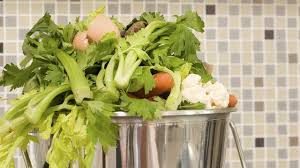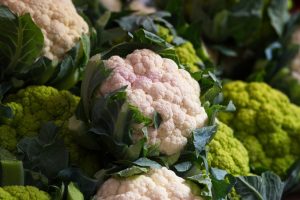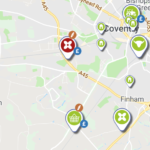What to do in your organic veg patch in October

Here is a great resource to help you grow great fruit and veg at home from our friends at Garden Organic. Like BigBarn Garden Organic work with schools to get kids growing veg and they are supporting our petition to get Food Growing on the national curriculum (please sign here).
So here is what they are suggesting to do in October:
October is the month of harvest festival. A time to gather in and celebrate your successes in all parts of the garden: and start to plan for next year!
The end of the growing season also means a busy time composting crop remains, saving seeds and preparing your soil for winter.
See below for advice on soil, vegetables, fruit, herbs and the greenhouse. Plus what to sow and plant in October.

raised beds ready for planting
Large areas of bare soil start to appear in all parts of the garden. If left over winter, the soil will lose nutrients. Use organic mulches to protect it and give good structure for next year’s growing season. Best mulches are a thick layer of:
autumn leaves, wetted so that they don’t blow away straw, grass clippings and autumn leaves mixed together cutback plants such as sweet peas, peas or runner beans, chopped up Several sheets of newspaper, covered with damp grass clippings to weigh it all down.
Don’t put compost down now, many of its nutrients could be washed away over winter. Use it in Spring before the growing season.
If you have too much material for the compost bin, pile excess into sacks temporarily. As the bin’s contents subside, top up with your stored material.

Don’t throw it, compost it!
Insulate your worm bin with bubble wrap, or move it into a warmer spot, such as a porch or greenhouse. This will help to keep the worms working well over winter.
Collect deciduous autumn leaves and store, to create leafmould. Make sure leaves are damp, and use plastic sacks with holes for air circulation. Trials at Ryton Organic Gardens over many years have shown the value of adding leafmould to the soil. Plants are healthier, crop yields are higher, and pest/disease problems fewer.
To attract beneficial insects, and to help them overwinter in the garden, leave some leaf piles in secluded corners; make a small log stack; allow some tussocky plants to stand all winter.

Boring or delicious?
Save your own, organically grown, seeds, it is easier than you might think. Just leave a few pods on bean plants to dry in the wind, and collect before winter frosts.
Autumn is the best time to lime your soil. Organic gardeners use dolomite limestone, which is slowly broken down in the soil. Apply it where you plan to grow brassica crops next year. Never lime soil before growing potatoes.
Compost trench
Start a winter compost trench: this will be next season’s planting area for moisture-loving crops such as runner beans or pumpkins. Dig a trench – or a hole – a spade deep. Fill with kitchen scraps as they come available, covering each addition with some soil. When the trench is full, cover with soil.
 Runner beans, carrots, beetroot, pumpkins and winter squashes are all ready to be harvested, stored or preserved. Do this before any frost.
Runner beans, carrots, beetroot, pumpkins and winter squashes are all ready to be harvested, stored or preserved. Do this before any frost.
Remove dead and yellowing leaves from winter brassicas and put in compost bin. If left on the plant, they can encourage fungal diseases and harbour pests.
Check that bird netting is still in place. Pigeons are likely to damage your Brussels and broccoli for winter food.
Fruit
Plant new fruit trees and bushes.Choose ‘bare root’ plants, they usually cost less than pot grown ones. Ideally choose organic stock, certified disease free and from an organic nursery. The soil is still warm now so plants will be able to start developing a good root system before winter.

Prize crop
Put apple and pear windfalls onto the compost heap.
Prune out canker-infected branches and twigs on apples and pears. Disinfect tools afterwards.But don’t prune cherries, plums and peaches and apricots. Wait until Spring when sap is moving and wounds heal rapidly.
Apply greasebands to apple, pear, plum and cherry trees. You’ll stop wingless female winter moths and March moths from crawling up the tree to hibernate or lay eggs. Remember to grease the supporting stakes too, as they offer an alternative route into the tree.

Healthy plants
Inspect apple trees for woolly aphids; look for a whitish fluffy coating on bark. Rub off on sight as they can damage the tree. FS Woolly aphid for control measures.
Herbs
Clear away and compost dying foliage and stems
Dig up and destroy mint plants affected by rust. Replace next year with new, clean plants. Check rosemary plants regularly for rosemary beetle. Remove and destroy adults and larvae on sight
Greenhouse
Clean the greenhouse to remove overwintering pests. Citrox disinfectant – available from the Organic Gardening Catalogue – is ideal for the purpose.
Remember to wash under the staging as well as the top surfaces. Leave spiders where possible; they are excellent predators.
Wash out pots and trays. Good hygiene will reduce pest/disease problems.
Before you bring any plants in, check them for pests. Cut out any rolled/folded leaves and trim back top growth. Scrape off top 2 cm of potting compost and top up with grit over winter. Next spring, as growth starts, remove grit and replace with clean potting compost.
This is direct from Garden Organic’s website and has some great tips every month.

Your Local Food Map?
Many of our readers go on to grow their own crops, but often rather more than they really need for themselves. Please look out for places to sell your excess produce through our Crop for the Shop scheme here.
You will find places on our Local Food Map that have opted in with a carrot flag on their icon. You could even approach your local shop, pub or restaurant and supply them with fresh produce in return for a pint of beer or meal.
And please also advise them to join our map.